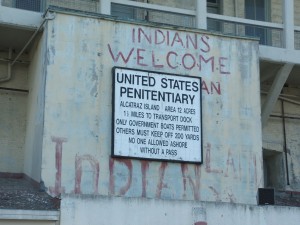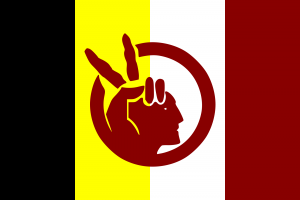The state of Indian affairs today is not good, but it contains within it certain strengths which suggest a better future for the people.
-Vine Victor Deloria Jr., 1987
As many radical movements do, the civil rights movement of Native peoples began with a manifesto: the 1969 book, Custer Died for Your Sins by Vine Victor Deloria Jr. The text decries the history of Native oppression and aims to invigorate Native peoples while starting a national dialogue. For this and much more, Deloria will be remembered as one of the most influential forces of Native activism in the twentieth century. Born in 1933 to the Standing Rock Sioux people of South Dakota, Deloria came up in a time in which the repression of and violence toward Native peoples primarily took the guise of well-meaning legislation from the United States government (like the paternalistic termination policy). Reclamation of Native identities in the face of such oppression was the bedrock of his activist movement, called “Red Power.” Although it was started by a Sioux man, the Red Power Movement is a pan-Indian one. That is to say, Native peoples of many tribal affiliations are able to rally together, seeking the amelioration of issues which jointly disenfranchise them.

This unified mentality is echoed in the 1969 occupation of Alcatraz Island in the San Francisco Bay by a group whose members identified themselves as “Indians of All Tribes.” The takeover was justified by a treaty which allows Native inhabitation of federal land that is unoccupied. The occupation lasted approximately one year, during which time the group became an inspiration for other efforts of radical Native activism. Dozens and dozens of occupations of federal lands by Native peoples followed the 1969 occupation, including a 1970 protest by the American Indian Movement in which the group seized a replica ship of the Mayflower and covered Plymouth Rock in red paint.

The protest was successful in reinvigorating national legislative debates about Native rights, and was an instrumental component in the development of self-rule policies as well as the expansion of federal funding to reservations. The early efforts of the Red Power Movement were loud and unyielding; they forced the US government and American people to confront not only the continued existence of Native peoples, but also their passionate refusal of continued injustice. Indeed, the public assertion of Native voice is an act of radical defiance to the colonizer’s myth of the disappearing Indian.
While groups like the American Indian Movement have faced internal division and experienced much change over the past decades, they laid the groundwork for pan-Indian efforts which are crucial when it comes to issues like repatriation. Repatriation is, much as termination policy was, a pan-Indian issue. The manner in which this is important is two-fold. First, legislating acts like NAGPRA would be much more logistically difficult if they had to be done on a tribe-by-tribe basis. Though the concept of a “Native American” is a constructed one, made of up thousands of cultural identities, the embracing of simplified terminology allows for at least some larger foundation from which individual tribes can work. And of course, in terms of future activism, a pan-Indian movement to push repatriation efforts surely has more power than a factionalized one. While it may be slow-going at times, Native activism promises progress.
Additional Resources: Full text of Deloria’s Custer Died for Your Sins, website of the American Indian Movement, PBS 1961-2002 Timeline of Indian Activism
Image Sources: Alcatraz and AIM flag
